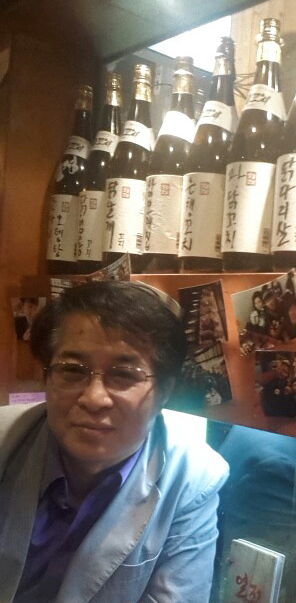[동영상 강의 유튜브 연우리 영어] → https://youtu.be/P29qYQdW6cM
[CT2-286]1265. ⋆⋆ [중앙대학교 2009]
With the Federal Reserve (A)[having reached] the limit of how much it can help the economy with cuts in the interest rate, (B)[Washington's ability to] end or at least limit the recession (C)[depends in] large part on the effectiveness of the big package of additional spending. (D)[No error]
[CT2-286]1265. [선행사 포함의 관계사 'how much' + 기타]
정답 - D
A : 'with 구문'은 완료 분사 사용 가능하다.
B : 'ability'는 동격 후치 수식은 부정사로 한다.
C : depends (in large part) on ~ : 많은 부분 ~에 달려있다
the limit of how much it can help the economy with cuts in the interest rate
= the limit of the amount it can help the economy with cuts in the interest rate
"이자를 낮춰서 경제를 도울 수 있는 금액의 한계"
[해석] 연방준비은행이 이자율 인하로 경제를 도울 수 있는 금액의 한계에 이르렀기 때문에 불경기를 끝내거나 또는 적어도 억제하는 미국의 능력은 많은 부분 추가적인 대규모의 소비 촉진 패키지에 달려있다.
[핵심 문법] 형용사 또는 부사인 선행사 포함의 관계사
That's how big it was.
= That's the size (that) it was.
'주절의 is' 다음에 보어가 없다. 또 '관계절의 was '다음에도 보어가 없다. 이 양쪽의 보어 자리를 채우기 위해 마치 선행사 포함의 관계사처럼 'how big'이 사용되고 있다. 같은 뜻이 되도록 보어 관계사로 전환하면 'the size that it was'를 쓸 수 있다.
This is how big I hope to become some day! My future body!
"이게 내가 언젠가 되길 희망하는 덩치야. 내 미래의 몸!"
That's how long it takes. "그게 필요한 길이야."
= That's the length of time (that) it takes.
'long'이 쓰인 경우이면 선행사로 'the length'를 써서 같은 뜻이 되게 할 수 있다.
Take your waist measurement and divide it in half; this is how wide each apron needs to be.
"허리 치수를 재서 반으로 나눠라. 이게 각각의 앞치마의 필요한 폭이다."
This is how much I miss you. "이렇게 난 널 그리워했어."
= I miss you this much.
정도 부사로 바꿀 수도 있다.
That is how much this has helped me. "저만큼 이게 내게 도움이 된 거야."
This is how much I know about myself. "이만큼 난 나 자신에 대해서 알지."
= I know this much about myself.
This is what I know about myself. "이렇게 난 나 자신에 대해 알지."
= I know this about myself.
이는 'what'을 이용하는 유사 강조 구문과 비슷하다.
This is how much I was charged from the company. "이만큼 난 회사로부터 청구당했지."
= This is the amount I was charged from the company.
금액이면 'the amount'를 써서 같은 뜻을 표현할 수 있다.
For me $ 35 is the limit of how much I am willing to spend for a pair of shoes. (금액)
"나에겐 35 달러는 신발 사기 위해 내가 쓸 수 있는 한도야."
You can email me if necessary, but that might be the limit of how much I can help. (범위)
"필요하면 이메일 보내세요. 하지만 그게 내가 도울 수 있는 한계에요."
John will be however tall his father was. "아버지의 키가 얼마였든 그만큼은 클 거다."
'주절 be'의 보어와 '관계절 was'의 보어 자리를 'however tall'이 마치 'whatever N'처럼 채우고 있다.
John will be however deceitful his clients want him to be that won't get him disbarred.
"존은 고객이 원하면 변호사 자격을 잃지 않는 한도까지는 속임수를 쓸 거다."
My lawyer will be however ruthless their lawyer is.
'그들의 변호사가 얼마만큼 무자비하든 내 변호사도 그만큼 그럴 수 있다."
[CT2-287]1266. ⋆ [중앙대학교 2007-1]
My father made it (A)[perfectly] clear that he did not intend (B)[to drive] all the way to North Carolina (C)[again] without (D)[Rose and I] to keep him company.
[CT2-287]1266. ['without' 목적격 + 부정사 구문]
정답 - D : [Rose and I] → [Rose and me] : 'with'나 'without' 구문의 의미상의 주어의 격은 목적격을 사용한다. 그런데 뒤에 부정사(to keep)가 따르는 것이 이상하게 생각될 수도 있겠네요.
At first I felt uncomfortable being alone without him to keep the conversation moving.
"(그가 없는데) 그가 있어서 대화를 진행되게 할 수 없었기 때문에 홀로 있는 것이 처음엔 불편했다."
이처럼 가능성의 개념이 있으면 부정사를 사용한다.
Without him to keep me sane, I would be so lost. He knows me better than anyone, better than I know myself!
"그가 나를 나를 미치지 않게 하지 않으면 나는 난감해질 것이다. 그는 누구보다도 날 더 잘 안다. 나보다 나를 더 잘 안다."
조건의 의미를 갖고 있어서 부정사를 쓰고 있다.
It will get cloudy in the evening, with rain to follow. "저녁에는 날씨가 흐릴 것이야. 비가 올 거 같아서."
'동시적인 상황'이 아니고 미래임이 분명하면 'with 구문' 다음에도 부정사를 사용한다.
The horse will cross the river first, the elephants to follow.
"말이 먼저 강을 건너게 될 거고 코끼리들이 뒤따를 것이다."
여기서도 미래 의미가 분명해서 부정사를 사용하고 있다.
The police dashed in, with Melvin following behind. "경찰이 돌진해 들어왔고 멜빈이 뒤따르고 있었다."
장소적으로 뒤따르고 있는 것은 동시 상황이어서 분사를 사용하고 있다.
keep someone company : 누구를 상대해 주다 : spend time with someone so that they will not feel lonely
[해석] 아버지는 로즈와 내가 함께 하지 않으면 다시 저 멀리 노스캐롤라이나까지 차를 몰고 갈 생각이 없음을 아주 분명히 했다.
[Ⅰ권 끝]
'편입 문법 3000 Plus' 카테고리의 다른 글
| 편입 문법 3,000제+ 강의 [234회] (0) | 2021.02.10 |
|---|---|
| 편입 문법 3,000제+ 강의 [233회] (0) | 2021.02.10 |
| 편입 문법 3,000제+ 강의 [231회] (0) | 2021.02.08 |
| 편입 문법 3,000제+ 강의 [230회] (0) | 2021.02.06 |
| 편입 문법 3,000제+ 강의 [229회] (0) | 2021.02.06 |
